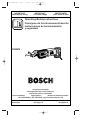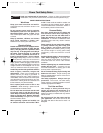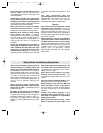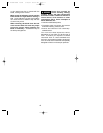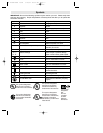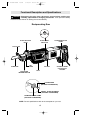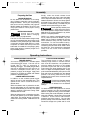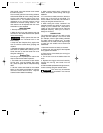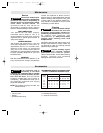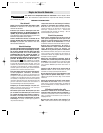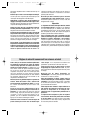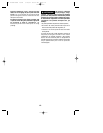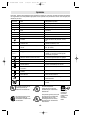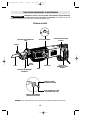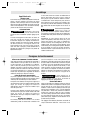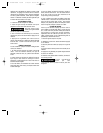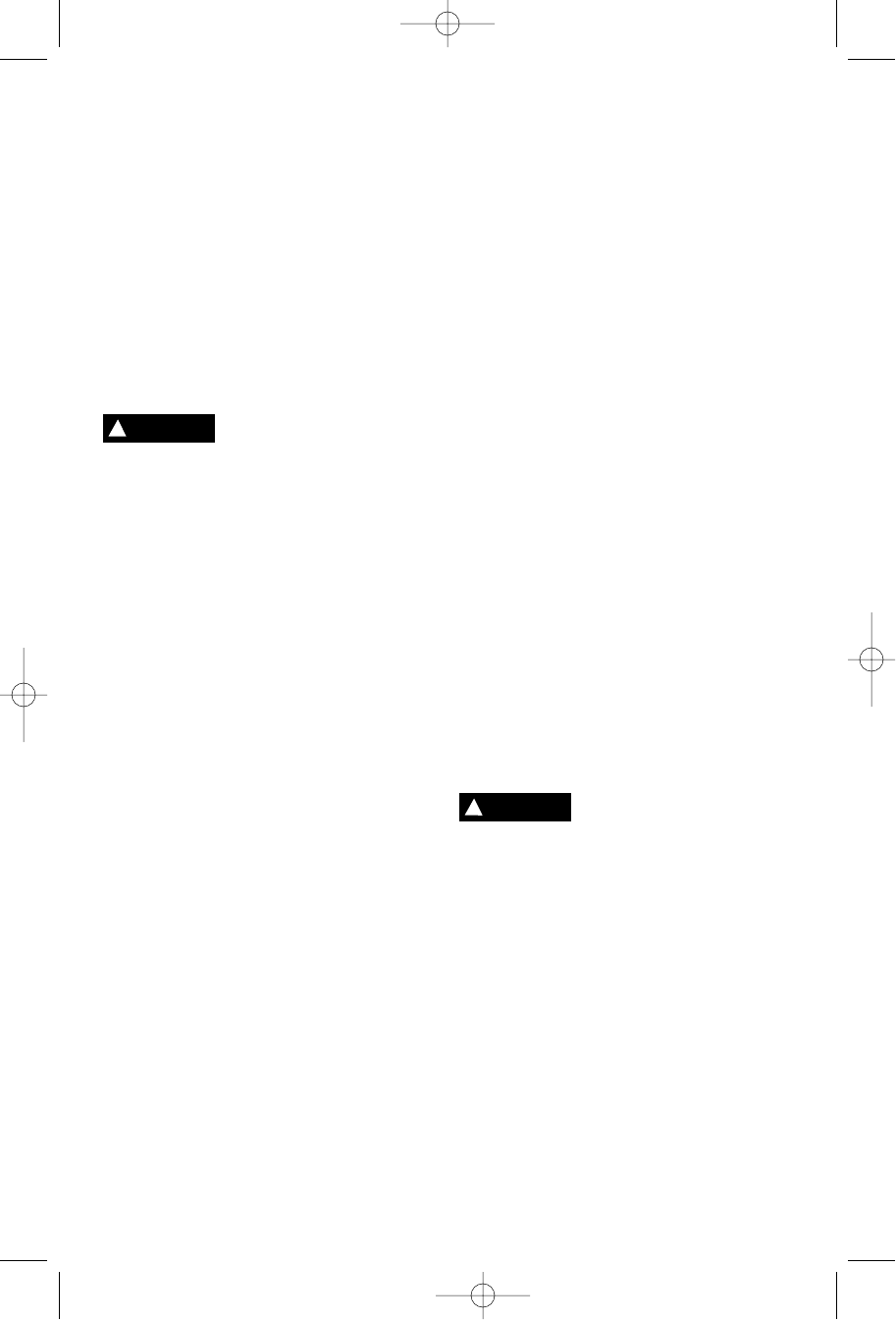
-8-
orbit (wood), move the selector lever toward
the orbit cut symbol.
The non-orbit gives the best cutting advance
and extends blade life when cutting steel and
similar hard materials which have more
resistance to cut. For materials that have less
resistance to cut, the orbit position can be
selected for the best cutting advance. The
orbit selector can be adjusted with the motor
switched on or at a standstill.
USING THE SAW
1. Securely clamp the work.
2. Mark the line of cut and grasp the tool with
one hand on the handle and the other placed
on the front housing.
Always operate the saw with
the insulated boot on the
front housing.
3. Keep the saw footplate firmly against the
work to minimize counter-force (jumping) and
vibration.
4. Squeeze the trigger to start the tool. Let the
saw reach full speed before starting the cut.
Guide the saw so that the blade will move
along the marked line.
Sawing Tips
Following a few simple tips will reduce the
wear on both the tool and the operator.
1. The blade cuts on the draw or back stroke.
On fine work, such as paneling, fiber glass,
etc., place the good side of workpiece facing
down.
2. Use the correct saw blade for the material
being cut and keep extra blades on hand to
use when others become dull. Replace
cracked or bent blades immediately.
3. When cutting metal, apply a lubricant for
easier, smoother, faster cutting and longer
blade life.
4. For non-ferrous metals, aluminum, bronze or
brass, use a stick wax on the blade. For
ferrous metals, iron and steel, use machine or
cutting oil along the surface to be cut.
5. When cutting thin metal, “sandwich” the
material between two pieces of scrap wood.
Clamp or put in a bench vise. One piece of
lumber on top of the metal can be used with
adequate clamping. Place your cut lines or
design on the wood.
POCKET CUTS
The reciprocating saw can be used to make
plunge cuts into material, if it is not too hard
(for example, wood or light building materials
for walls), without a starting hole. In harder
materials, such as metal, a hole large enough
to take the saw blade should be drilled
beforehand.
1. Mark the line to be cut clearly on the work.
2. Set the tool with one edge of the footplate
firmly against the material.
3. Place the tip of the blade (not running) on
the line to be cut.
4. Tilt the saw so that the blade clears the
work.
5. Squeeze the trigger switch and carefully
engage the moving saw blade into the
material.
6. After the blade penetrates through the work,
continue sawing along the marked outline.
The use of any accessories
not specified in this manual
may create a hazard.
!
WARNING
!
WARNING
BM 2610910645 12/00 1/23/01 10:53 AM Page 8



